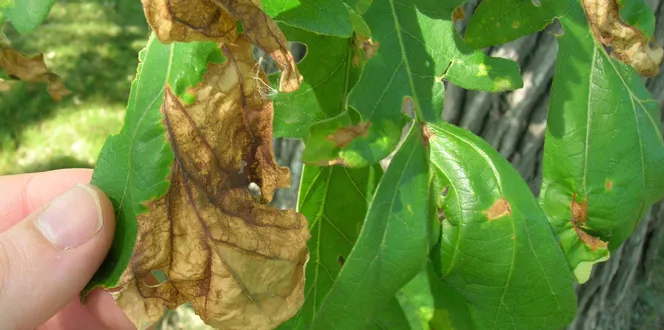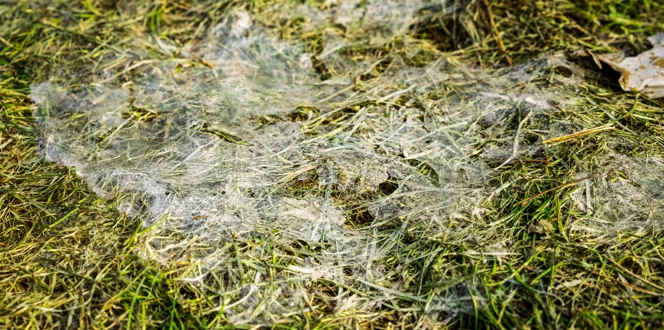Usually, new growth on our landscape is a good sign. What could be more pleasing than lawns full of thick, green blades and trees budding with crisp leaves or vibrant flowers?
Just when you thought there wasn’t a sprout you couldn’t love, mushrooms popped up at the base of your tree. Are they inherently bad for your tree? Not always! Many mushrooms form beneficial connections with the tree's roots.
But there are harmful fungi out there, too, like honey fungus. This is a particularly dangerous mushroom that grows near tree roots.
Learn how to identify honey fungus, how this fungus hurts trees and how to manage it.
Mushrooms Growing on Tree Roots–Identification, Facts and Treatment
What does honey fungus look like? How can I identify it?
Look for yellowish-brown mushrooms growing in clusters at the base of your tree or around your tree’s roots. There’s usually a distinct white ring around their stems, and when in peak condition, they have flat tops.
You’ll likely see these mushrooms between late summer and early winter. If you suspect it might be honey fungus, breathe in. It’s called honey fungus because of its sweet smell.
Also, look for:
Small and pale leaves
Early leaf drop or early fall coloring
Unusually concentrated and substantial growth of flowers or fruit
White fungus growing under the bark with a distinct mushroom smell
What types of trees do honey fungus attack?
The fungi are especially attracted to oak trees. But birch trees, fruit trees and hedge plants are other common victims.
Tell me some facts about honey fungus. What does it do to trees?
The fungus attacks and decays tree roots, and eventually may kill the roots entirely. And since the rot is at the base of the tree, the fungus eats the wood and bark there, causing the tree to become unstable. From there, the tree is at risk of breaking at the base and falling.
Once honey fungus invades roots, it’s tough to control, which is why prevention is the best option.
Avoid practices that invite honey fungus, such as:
Over-watering trees since this fungus thrives in moist conditions
Leaving dead or diseased branches on the tree which increases odds of an infection
Failing to protect roots from machinery damage or pest and disease infestation
How can I treat or manage honey fungus?
Unfortunately, these persistent mushrooms can’t be treated with a fungicide. And the fungus can be quite devastating. Honey fungus spreads underground, so have a certified arborist inspect nearby plants as well.
Often, the best course of action is to remove and destroy infected plants to keep the fungus from harming other plants in your yard. If the infection is less severe, you can transplant the tree. Though, this rarely happens.





